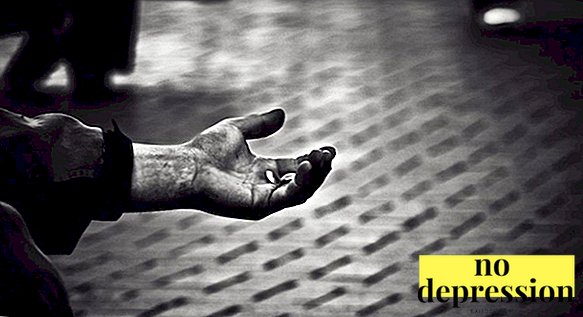Emotions allow us to interact with other people, understand each other better.
In this regard, the question of emotional states and their classification is of particular importance.
What it is: concept

Emotional condition - This is a mental state that occurs in the process of life and determines the orientation of the behavior of the individual.
Many aspects of life, including health, performance, and sociability, depend on this condition.
At the same time, it has impact from the outside. For example, this may include the area of residence of the individual or the atmosphere in the workplace.
Also revealed directly music influence on the human condition. For example, depressive compositions lead to despondency for no apparent reason, and active melodies evoke positive feelings.
Psycho-emotional states are understood as a special form, which is characterized predominance of emotional response on any event, action or situation (see photo).
Classification: main types

What could be the emotions?
In his life, a person experiences a variety of emotions, some of which are even difficult to describe.
At the same time, various researchers have tried to structure them. There is still no single approach to this issue.
If we consider the simplest classification, it can be represented as follows:
View | Characteristic | Example |
Positive | Have a pleasant emotional background, act as a positive reinforcement for a person. | Joy, delight, love, pleasure, sympathy, admiration, enthusiasm and others |
Negative | They have a negative emotional background. | Grief, fear, envy, anxiety, despair, longing, anger, sadness and other |
Neutral | Do not have an emotional color, do not affect the mood of a person | Indifference, surprise, curiosity and other |
In addition to this list, in psychology, emotions are also divided into the following types:
- Basic - all people, despite their differences, culture and place of residence, appear outwardly the same.
- Variable on the contrary, they appear outwardly diverse. They are just due to cultural or personal characteristics.
- Congenital. Under congenital refers to those possessed by the infant since birth.
- Acquired. So called emotions that a person receives in the process of obtaining life experience and socialization.
- Elementary - the most simple, which can not be decomposed into even smaller ones.
- Compound. Represent one or another combination of elementary emotions.
- Natural. By natural means those defined by human nature, its genes.
- Cultural. They are formed during the direct development of culture.
- Cognitively simple - arise as a result of the reaction to any elementary stimulus.
- Cognitively complex. They appear as a result of understanding what happened, calculating existing interests, taking into account possible consequences.

Do not underestimate the role that emotions play in various areas of our lives.
For example, on the basis of psychological research in marketing was created matrix of emotions. It is used by brands to create their own logo.

Its essence is that the desire in the upper right corner seems more enjoyable, credible. Also considered harmonious concentration of the logo in the middle of the matrix.
But if the direction of the logo tends to the lower left corner, then such a brand creates a negative impression.
Forms and examples of emotional processes and states
Emotional states and processes can be classified as follows:
- Emotions. Arise as a result of real events, and as a result of imaginary situations. With them, the meaning of the situation, the urgency of its needs, satisfaction or dissatisfaction from the activity or the upcoming event is expressed. It is important to note that the emotional state of the participants of communication is empathized and transmitted to each other.
- The senses. In human life, they are often motivating. This is reflected in the fact that in relation to everything that surrounds the individual, he tries to act in such a way that his positive states and experiences improve. A strong and steady feeling is passion, and a moderate steady feeling is mood.
At the same time, mood is the longest emotional state that colors all behavior.
- Affects. Affect is an extreme emotional state, which is expressed in visible changes in the behavior of the individual. It proceeds quickly and violently and, as a rule, does not differ in rationality.

Izard's differential emotions - table
K. Izard identified the following basic human emotions:
- Interest. Since a person is distinguished by a social way of life, interest is for him one of the most frequently experienced feelings. Thanks to him, the individual acquires new skills, abilities, knowledge. Interest helps him grow, both physically and intellectually. It is of particular importance, as it affects the development of both the individual and society as a whole.
- Pleasure. In some sources it is also called as "joy." It is characterized by a positive background and arises as a result of the ability to satisfy a need that is relevant to the individual or to meet it directly.
It is of great importance for a person, it increases his self-confidence, facilitates the process of interaction with others, helps to get rid of negativity and stress.
- Surprise. It does not have any color and is manifested as a reaction to a sudden occurrence of a phenomenon or action. The main task of surprise is to prepare the individual for the surprise, to focus his attention on this event.
- Anger. Negative state, which mainly arises due to the impossibility of satisfying a significant need or failure on the way to its satisfaction. May also be caused by deception or insult. Anger has an uncontrollable form - anger that arises when there is maximum dissatisfaction with the circumstances.
- Disgust. The negative state of a person, which appears as a result of interaction with something or someone unpleasant. Disgust is characterized by a strong desire to get rid of the factors that directly provoke him.
- Contempt. It appears due to disagreements of the existing beliefs and actions of one individual with the beliefs and actions of another. Its function is to make a person feel better than the person to whom his contempt is directed.
- Shame. It arises as a result of a discrepancy between appearance or behavior with own convictions and the opinion of society.
On the basis of this state, a feeling of helplessness appears, which is very unpleasant for a person.
- Wines. It arises on the basis of condemnation by the individual of his own actions. Accompanied by self-doubt, as well as feelings of shame and remorse.
- Fear. Represents a negative state. It appears as a result of receiving information about the threat to human life, both real and imaginary. It is of great importance, as it affects the appearance, behavior and thinking of the individual.
- Grief. It is a reaction to negative situations that have arisen in life, which can be permanent or temporary. Very often he acts for the individual as a moderate motivation, so that he begins to solve the problems that he has accumulated.



K. Izard also developed a scale of differential emotions. It is used to diagnose the dominant emotional state in humans. To do this, use the scale of significance of emotions, which looks like this:
Emotion | condition | Total points | |||
WITH1 | Interest | Attentiveness | Concentration | Self-discipline | |
WITH2 | Joy | Enjoyment | Happy | Glad | |
WITH3 | Surprise | Surprise | Amazement | Defeat | |
WITH4 | Grief | Depression | Sorrow | Brokenness | |
WITH5 | Anger | Excitation | Anger | Madness | |
WITH6 | Negation | Dislike | Disgust | Disgust | |
WITH7 | Contempt | Contempt | Neglect | Arrogance | |
WITH8 | Fear | Scare | Fear | Panic | |
WITH9 | Shame | Shyness | Timidity | Shame | |
WITH10 | Wines | Regret | Wines | Repentance | |
Participants are invited to rate on a 4-point scale your well-being (that is, each column of the table above) at the moment, where:
1 - does not fit at all;
2 - rather true;
3 - right;
4 - absolutely exactly.
After that, each line in the table is the sum of points and calculated the coefficient of well-being (COP), according to the following formula:
KS = (C1 + C2 + C3 + C9 + C10) / (C4 + C5 + C6 + C7 + C8)
If the final value is greater than 1, then the state of health can be characterized as positive, but on the contrary, less than 1, then the emotional state is negative, it is even possible to be depressed.
Response scale

Emotional Response Scale - this is a technique in the form of a questionnaire, which is used for empathy of a person, that is, the ability to empathize and emotional response.
The questionnaire presents 25 judgments, among which there are both direct and reverse.
In order to pass it, it is necessary to assess the level of their agreement: always agree, rather agree (or often agree), rather disagree with the statement (or agree, but rarely) and never agree.
Due to this scale, it becomes possible to see the attitude of the individual to different situations of interaction with other people.



In the end calculated the total amount of points received and compares with the following grades:
- less than 11 points - an extremely low level of empathy;
- from 12 to 36 points - low level of empathy;
- from 37 to 62 points - a normal level of empathy;
- from 63 to 81 points - a high level of empathy;
- from 82 to 90 points - an extremely high level of empathy.
The ability to empathize is a valuable quality for an individual, but too much empathy is not always useful. Considered the most favorable normal level (37-62 points), when a person shows empathy, but at the same time does not forget about his own interests.
Extremely high level of empathy is characterized by too high flexibility - such people are often used for their own purposes. In turn, it is difficult for individuals with extremely low levels to build relationships with others, they are hard to contact.
In our life there is a wide variety of emotions. They perform various functions and are of great importance for humans. In this regard, this topic is quite interesting and is actively studied by researchers to this day.
Definition and types of emotions:



